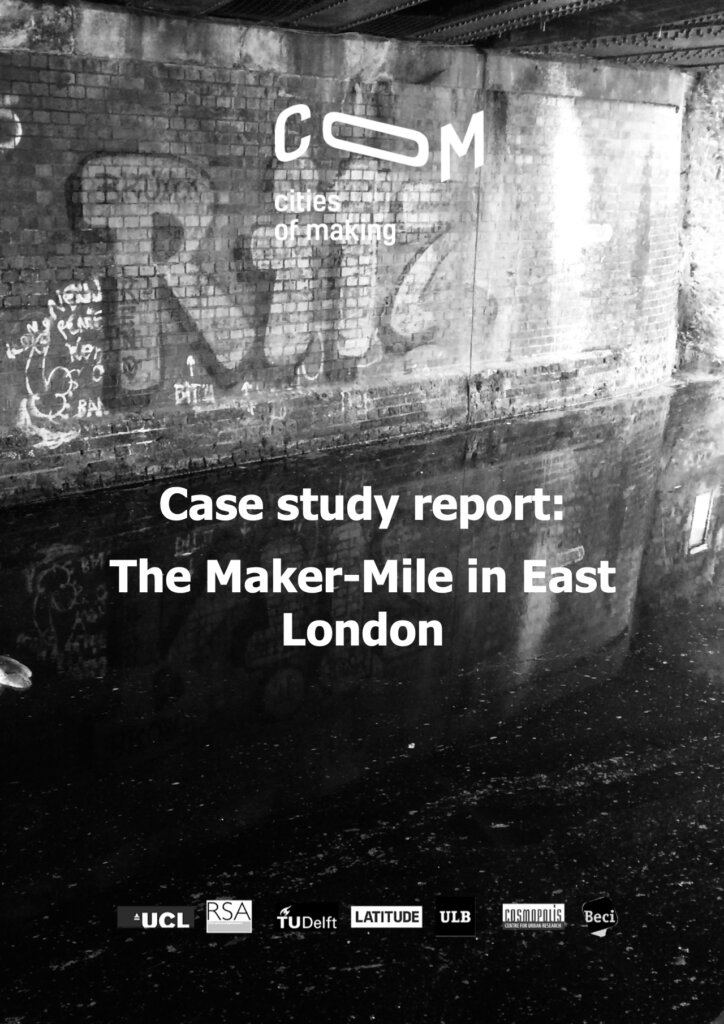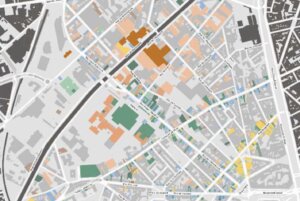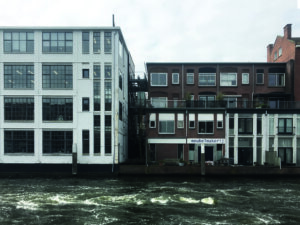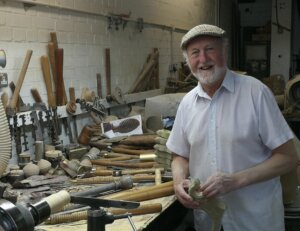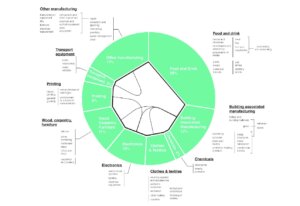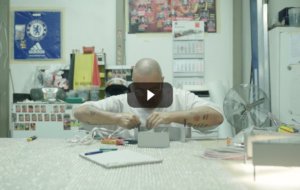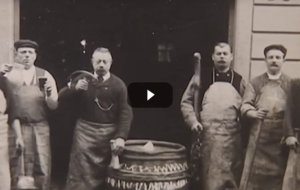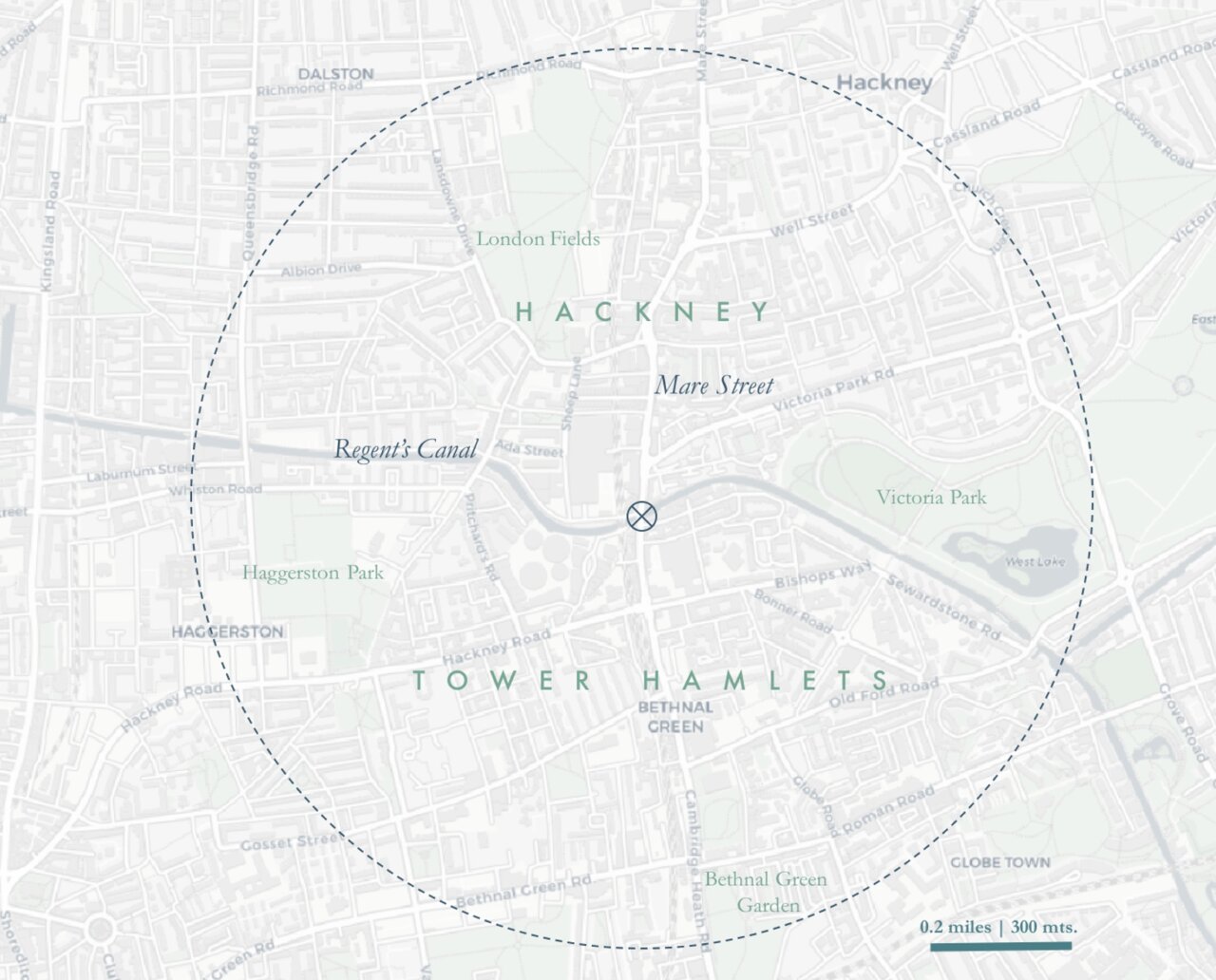
Case study report: The Maker-Mile in East London
A map of the study area in East London.
Historically, the ‘Maker Mile’ area appears to have been a primarily residential neighbourhood, with industrial uses being found cheek-by-jowl with terraced housing. However, in the first half of the 20th century, parts of the area were redeveloped providing space for larger scale warehouses and factories. The ‘Maker-Mile’ now includes a wide range of types of manufacturing including hardware start-ups, artist and design studios and food businesses.
This case study focuses on making and manufacturing in the London inner city area of Hackney and Tower Hamlets, known as the ‘Maker-Mile’. It illustrates how manufacturing and making has historically and dynamically become embedded into a mainly residential-commercial part of London, with makers being distributed across the area as opposed to being isolated in industrial estates. Manufacturing and making has evolved substantially in the area over the decades from distinct pockets of manufacturing to more mixed-use spaces where manufacturing, residential and commercial activity concur in the same space. Currently, manufacturing generally work well with residential uses in the area, partly because most processes are non-polluting and relatively quiet.
This part of London is a buzzing creative centre, benefiting from both networks of local artists, and spill overs from the Shoreditch tech sector. The area also attracts relatively well-off residents and visitors, who have high levels of purchasing power – meaning that firms can access an attractive local consumer market, both for their products, and for off-shoots such as training and leisure activities. As a result, local manufacturers have diversified into a number of different activities, where the boundaries of manufacturing dilute into commercial, design and training. The informal networking that the area supports appears to be helping to promote innovation and collaboration. Local ‘maker spaces’ – such as Machines Room – have also provided opportunities for the sharing of both technology and ideas.
However, the area also presents a number of important challenges to its makers – not least rising property prices and business rents. In recent years this is causing many makers and manufacturers to close down and leave– and indeed maker spaces are also under threat and having to contract in size. In addition, it was notable that manufacturers in the area were having to source suppliers at an international scale, highlighting the hollowing out of the UK and London supply chain in many sectors. There was also a lack of knowledge as to the nature of waste flows, and the possibilities represented by the circular economy. While local policy makers and networks are aware of these challenges, more resources are needed to support a more comprehensive mapping of the manufacturing sector in this area. Local planning systems could also do more to ensure that basic and affordable industrial premises are protected.
